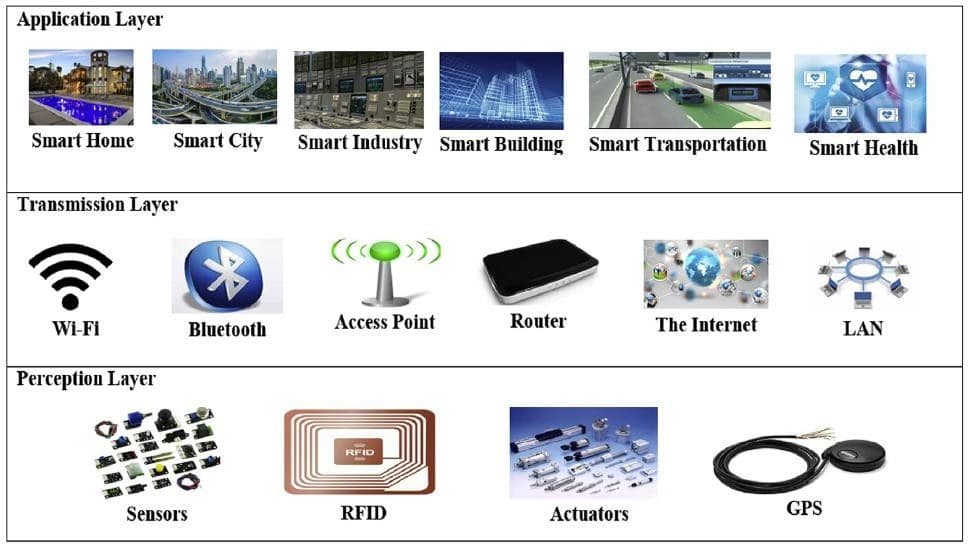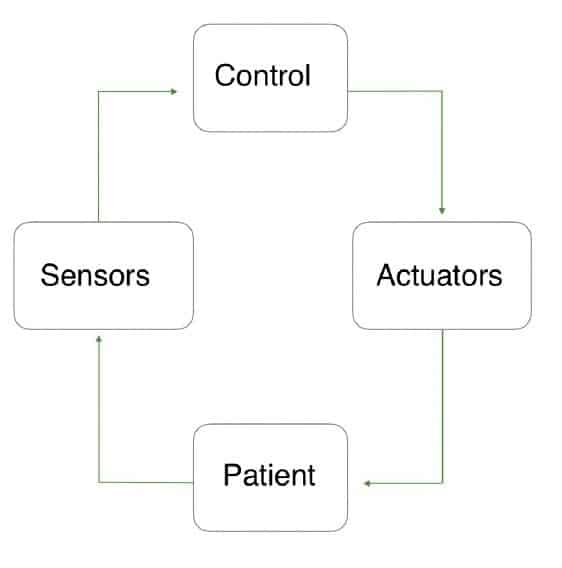Cyber Physical Systems: features, Applications and Challenges
Cyber-physical systems (CPSs) are smart systems that depend on the synergy of cyber and physical components. They link the physical world (e.g. through sensors, actuators, robotics, and embedded systems) with the virtual world of information processing. Applications of CPS have the tremendous potential of improving convenience, comfort, and safety in our daily life. This paper provides a brief introduction to CPSs and their applications.
What are Cyber-physical systems?
The term “cyber-physical system” (CPS) was coined in 2006 by Helen Gill of the US National Science Foundation (Henshaw, 2016). As the name suggests, CPS has both cyber (software control) and physical (mechanism) elements. Cyber-physical systems (CPSs) are engineered systems that are designed to interact seamlessly with networks of physical and computational components. These systems will provide the foundation of our critical infrastructure and improve our quality of life in many areas. CPSs and related systems (such as IoT and industrial Internet) have the potential to impact various sectors of the economy worldwide.
CPS is basically an engineering discipline, focused on technology and modeling physical processes (differential equations, stochastic processes, etc.) with mathematical abstractions. In a CPS, computing elements coordinate and communicate with sensors, which monitor cyber and physical indicators and actuators. CPS is also similar to the Internet of Things (IoT), sharing the same basic architecture (Cyber-physical system, 2017). It is also related to embedded systems. While an embedded system is
typically confined to a single device, a CPS may encompass many constituent systems and devices. CPSs will bring advances in personalized health care, emergency response, traffic flow management, electric power generation and delivery, and “smart” anything (e.g., cars, buildings, homes, cities, manufacturing, hospitals, appliances).
Features of cps
As illustrated in Figure 1, CPSs are complex systems with the integration of computation, communication, and control (3C) technology (Wan, et al., 2011). They combine cyber capabilities (computation and communication) with physical capabilities (sensors and actuators). CPS can be found nearly anywhere, including medicine, automobiles, electric power grids, city infrastructure, manufacturing, aircraft, and building systems.
A CPS has three main components: (1) a physical system, (2) networking and communication element, (3) a distributed cyber system. CPSs are designed with a set of distributed hardware, software, and network components which are embedded in physical systems and environments. The software plays the most important role; it includes all software programs for processing, filtering, and storing information. CPSs interact with the physical system through networks. The major characteristics of CPS include distributed real-time, scalability, and reliability. Most CPSs support real- time applications such as real-time monitoring, real-time control, and real- time forecasting.
As shown in Figure 2, CPS operates at three layers: perception, transmission, and application (Ashibani and Mahmoud, 2017). The perception layer (or sensors layer) has terminal devices such as sensors, actuators, cameras, GPS, RFID tags, and readers. These devices possess the ability to collect real-time data such as sound, light, hear, electricity or location and perform commands from the application layer. The transmission layer (or network layer) interchanges and processes data between the perception and the application. Transmission is achieved using local area networks, the Internet or communication technologies such as Wi-Fi, Bluetooth, ZigBee, and infrared. The application layer processes information from transmission layer and issues commands to be executed by the sensors and actuators. The main objective of the layer is to create a smart environment.

Mobile cyber physical systems are special CPSs with inherent mobility. Smartphone platforms make ideal mobile cyber-physical systems. Typical examples of mobile cyber-physical systems include applications to detect traffic accidents, measure traffic, and monitor cardiac patients (Cyber- physical system, 2017).
Applications
Common applications of CPS typically fall under sensor-based communication-enabled autonomous systems. These include smart power grid, autonomous automotive systems, medical monitoring, process control systems, distributed robotics, and automatic pilot avionics. Development of new smart CPSs will drive innovation and competition in sectors such as agriculture, energy, transportation, building design and automation, healthcare, and manufacturing. Some of these applications are further explained as follows (Zanni, 2015) (Khaitan and McCalley, 2015) (Al- Jaroodi, et al., 2016).
- Manufacturing: CPSs are vital to preserving our national competiveness in manufacturing. They can improve processes by sharing real-time information among the industrial machines, manufacturing supply chain, suppliers, business systems, and customers. They enable complete optimization of a manufacturing plant, where information can be communicated among industrial machines.
- Healthcare: Rising healthcare costs, an aging population, and diminishing medical resources are driving health-care providers to seek technological innovations. CPSs are used for real-time and remote monitoring of the physical conditions of patients to limit patient hospitalization or to improve treatments for disabled and elderly patients. CPSs also enable intelligent operating rooms and hospitals and the development of physical prostheses. Health CPS will replace traditional health devices in the future. Figure 3 shows an example of medical robotic CPS (D’Auria and Persia, 2017). CPSs are poised to transform the healthcare delivery and services. Context-aware Medical CPS can detect human errors in medical environment and are patient safety centric (Li, et al., 2015).
- Renewable energy: Development of renewable energy has been in the forefront of public interest and is of high priority for policy makers. Smart power grids are CPSs where sensors and other devices monitor the grid to control it and provide better reliability and improve the energy efficiency. Smart devices and CPSs interact to reduce energy consumption, increase safety and security, and improve inhabitants’ comfort.
- Transportation: Development of CPSs have an impact on the design of future aircraft and air traffic management systems. CPS technologies can greatly reduce or eliminate accidents caused by human errors. Individual vehicles and the infrastructure can communicate with each other, sharing real-time information about traffic, location, or issues, in order to prevent accidents or congestion, improve safety, and ultimately save money and time.
- Agriculture: CPSs can be used to create more modern and precise agriculture. CPSs can collect fundamental information about the climate, the ground, and other data, in order to realize more accurate systems of agricultural management. Precision agriculture and food security can be achieved through the integration of CPS technologies with agricultural and food systems.
- Computer networks: CPSs can boost cyber environments to better understand systems and users’ behaviors. The integration of CPS functionality into social networks can make a profound impact. Popular social networks and e-commerce websites store users’ navigation information and analyze the information to predict interests and make recommendation for friends or products.
Other applications include military systems, assisted living, traffic control and safety, process control, instrumentation, aircraft, robotics, trains, water management systems, logistics, education, and research. The list is long, impressive, and growing rapidly.
Challenges
A CPS presents some challenges that are not always found in a classical business information system or embedded system. Some of the hard technical challenges include:
- Data heterogeneity: Systems need to be able to support a great number of different applications and devices. Digital devices use different communication protocols such as Bluetooth, Zigbee, RF, and infrared.
- Reliability: Reliability and safety are basic requirements because of how actuators affect the environment. Any failure of the CPS components can lead to degradation of the system, which may cause major harm to life and property.
- Data management: It is necessary to store and analyze big data from different connected devices, process them, and show real-time results.
- Privacy: Since CPSs manage large amounts of data, including sensitive information like health, gender, religion, and many others, significant issues about data privacy are raised
- Security: CPSs are based on heterogeneous applications and wireless communications, which often raise critical security issues. Security has become a global issue.
- Real-time: CPSs must ensure that they have the bandwidth or system capacity needed to meet time-critical functions because failures on time of actions can cause permanent damages.
A challenge in the developing and designing CPSs is the large differences in various engineering disciplines involved, such as software and mechanical engineering. CPSs require a highly skilled workforce, encouraging multidisciplinary collaborations between academia and industry.
Conclusion
CPSs integrate computing and physical processes. The economic potential of CPSs is vastly greater than what has been realized, and major investments are being made worldwide to develop the technology. Technical advances in CPS will enable capability, adaptability, scalability, resiliency, safety, security, and usability that will far exceed the simple embedded systems of today.
Sadiku, M. N. O., Wang, Y., Cui, S., & Musa, S. M. (2017). Cyber-Physical Systems: A Literature Review. European Scientific Journal, ESJ, 13(36), 52. https://doi.org/10.19044/esj.2017.v13n36p52




























